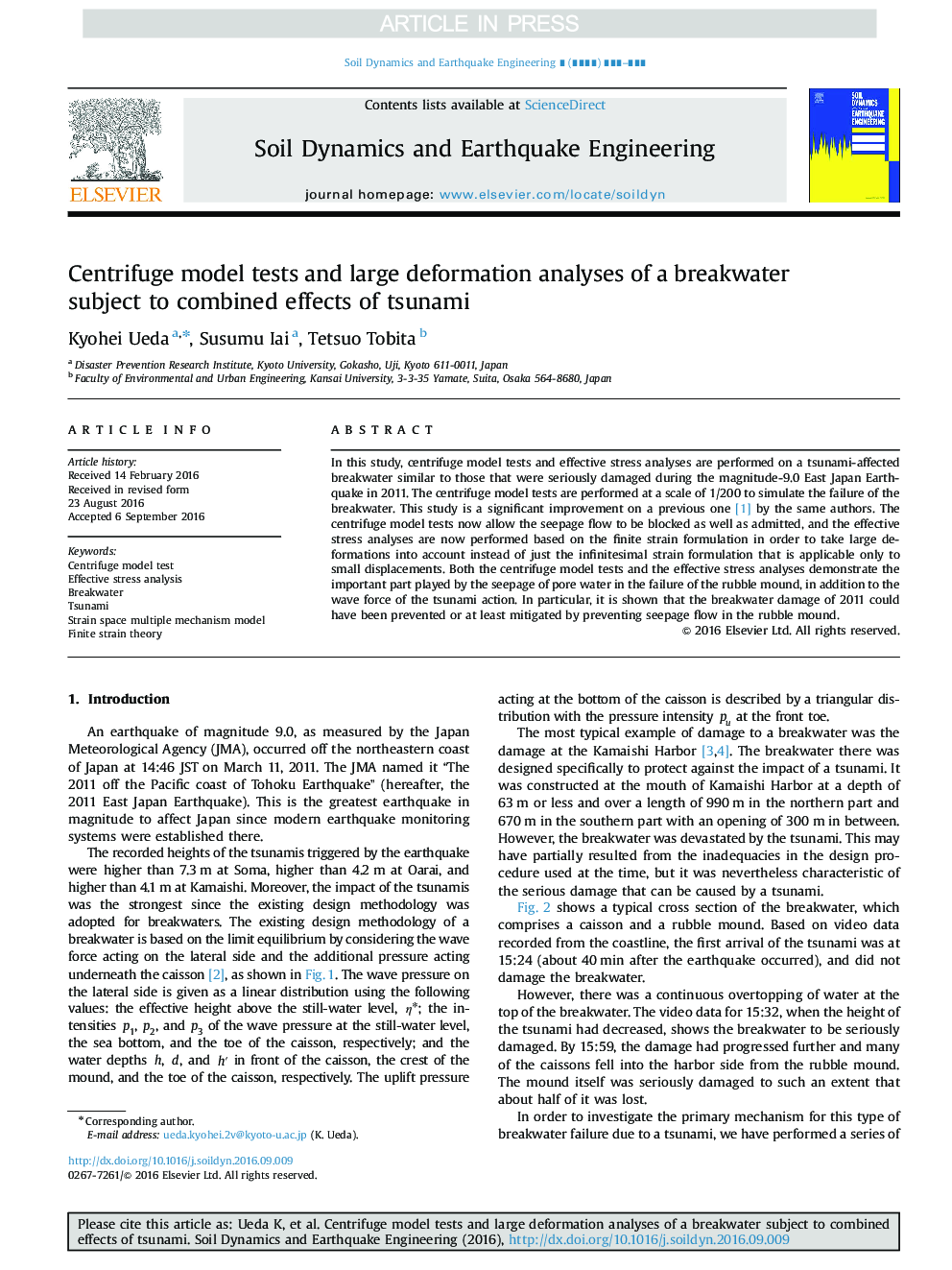| Article ID | Journal | Published Year | Pages | File Type |
|---|---|---|---|---|
| 4927378 | Soil Dynamics and Earthquake Engineering | 2016 | 10 Pages |
Abstract
In this study, centrifuge model tests and effective stress analyses are performed on a tsunami-affected breakwater similar to those that were seriously damaged during the magnitude-9.0 East Japan Earthquake in 2011. The centrifuge model tests are performed at a scale of 1/200 to simulate the failure of the breakwater. This study is a significant improvement on a previous one [1] by the same authors. The centrifuge model tests now allow the seepage flow to be blocked as well as admitted, and the effective stress analyses are now performed based on the finite strain formulation in order to take large deformations into account instead of just the infinitesimal strain formulation that is applicable only to small displacements. Both the centrifuge model tests and the effective stress analyses demonstrate the important part played by the seepage of pore water in the failure of the rubble mound, in addition to the wave force of the tsunami action. In particular, it is shown that the breakwater damage of 2011 could have been prevented or at least mitigated by preventing seepage flow in the rubble mound.
Related Topics
Physical Sciences and Engineering
Earth and Planetary Sciences
Geotechnical Engineering and Engineering Geology
Authors
Kyohei Ueda, Susumu Iai, Tetsuo Tobita,
